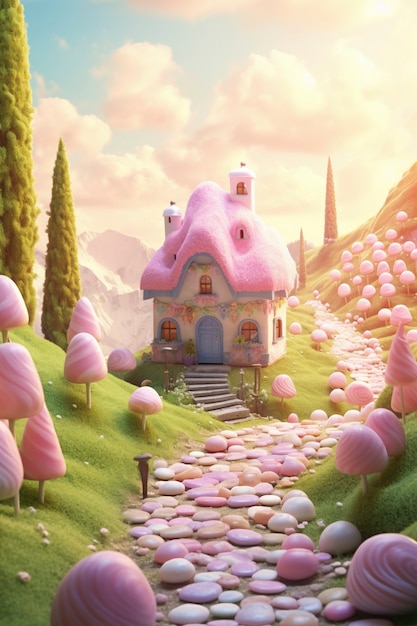
Welcome back to Revisiting Disney! Thanks for sticking with me despite the break. Let’s dive into one of my childhood favorites, Sleeping Beauty! As always, I’ve organized the discussion into categories so you can jump to what interests you most. And feel free to share your thoughts in the comments.
Just like Cinderella, Sleeping Beauty was a staple of my childhood. The music, the animation, the characters—everything about it was magical. We had it on VHS, although the beginning had been accidentally taped over with the end of Ghostbusters.
When I was a kid, I was always curious about what happened before Merryweather gave Aurora her gift since that part was taped over. I knew the story from the book, but the movie’s beginning felt unique and a bit out of place.
Even as a college student, I sometimes found the characters’ decisions frustrating. My friend and I would joke about how things would be better if they just did what we suggested.
Despite any minor frustrations, I never disliked this film. The art and music consistently drew me in. The characters were memorable, the dialogue was funny, and the score remains one of my favorites. Plus, the villain is absolutely fantastic.
BACKGROUND
Sleeping Beauty hit theaters on January 29, 1959. This movie was a major endeavor, taking nearly a decade from story work starting in 1951 to the final animation completed in 1958. It was one of the last Disney films to use hand-inked cells before switching to Xerox technology.
Despite becoming the second-highest-grossing film of 1959 thanks to re-releases, its initial reception was lukewarm. A Disney live-action movie from the same year, The Shaggy Dog, actually made almost twice as much money.
MUSIC
The music for Sleeping Beauty was adapted from Pyotr Ilyich Tchaikovsky’s ballet by George Bruns and recorded by the Berlin Symphony Orchestra. The rearranged ballet score supports the story beautifully, earning an Oscar nomination for Best Music in 1960. Bruns was an accomplished musician who worked on several other Disney classics and transitioned the score recording to a sophisticated 6-track stereo in Berlin, likely contributing to its acclaim.
ANIMATION
The animation of Sleeping Beauty is striking. The way the characters and backgrounds interact gives the film a unique visual style inspired by medieval art. Eyvind Earle oversaw the color styling and backgrounds, basing his designs on unicorn tapestries and pre-Renaissance art. His approach, while visually stunning, presented significant challenges for the animators who had to make the characters stand out against his intricate backgrounds.
Notable animators include several of Disney’s “Nine Old Men.” Marc Davis animated both Princess Aurora and Maleficent, while Milt Kahl worked on Prince Phillip and his horse, Samson.
THE PLOT
Our story begins with the celebration of Princess Aurora’s birth, attended by family and the three good fairies—Flora, Fauna, and Merryweather. Each fairy bestows a gift upon the princess, but before Merryweather can give hers, the evil fairy Maleficent curses Aurora to die before sunset on her sixteenth birthday by pricking her finger on the spindle of a spinning wheel. Luckily, Merryweather’s gift softens the curse, so Aurora will only fall into a deep sleep instead of dying, to be awakened by true love’s kiss.
To keep Aurora safe, the fairies take her to live in the forest under the name Briar Rose. On her sixteenth birthday, Aurora meets Prince Phillip, who she’s unknowingly betrothed to, and they fall in love.
Meanwhile, Maleficent discovers Aurora’s location and captures Phillip, intending to release him only after Aurora has been asleep for 100 years. The fairies free Phillip, arming him with the Shield of Virtue and the Sword of Truth for a climactic battle against Maleficent, who transforms into a dragon. Phillip’s victory awakens Aurora, and they live happily ever after.
CHARACTERS
Maleficent stands out as a fascinating villain—spiteful, powerful, and brilliantly voiced by Eleanor Audley. Prince Phillip is one of the more active Disney princes, showing bravery and resilience in his quest to save Aurora.
SOURCE MATERIAL
Sleeping Beauty is based on Charles Perrault’s fairy tale but also shares elements with the Grimm Brothers’ version. Compared to the darker, more complex original tales, Disney’s version is significantly more child-friendly.
50’S INFLUENCE
Sleeping Beauty reflects 1950s ideals, particularly in Aurora’s appearance inspired by the Gibson Girl—an epitome of turn-of-the-century beauty.
LESSONS LEARNED
From this story, we learn the importance of politeness (invite all powerful beings to your parties) and the value of thinking things through (keep Aurora hidden until her birthday passes). True love, coupled with virtue and truth, remains an enduring theme that conquers all.
DOES IT HOLD UP?
Despite its initial mixed reception, Sleeping Beauty remains a beloved film. Its artistic backgrounds, memorable characters, and thrilling climax continue to capture hearts. For me, it’s a timeless classic—beautiful both visually and narratively, embodying the true magic of Disney.
Stay tuned for next week’s look at One Hundred and One Dalmatians!

